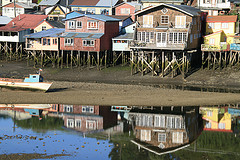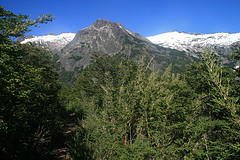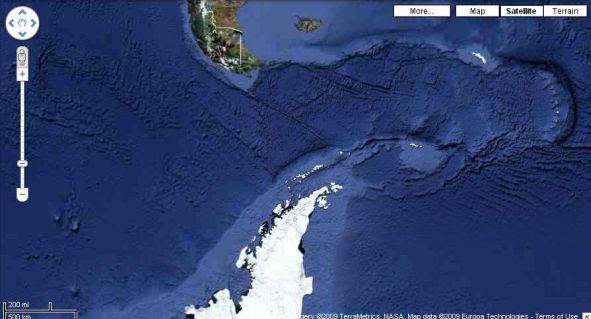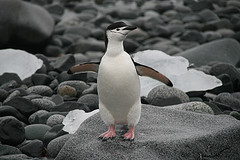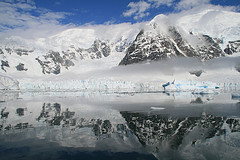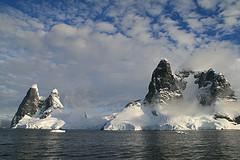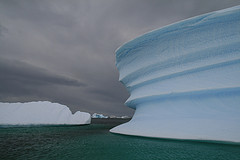Under siege in Sarajevo
June 3rd, 2010Crossing from Croatia to Bosnia & Herzegovina (without getting any passport stamps), the difference was noticeable immediately. Our bus turned inland, leaving the shimmering Adriatic Sea behind and making straight for the rugged and inhospitable mountains that we had been driving alongside for the past few hours. Five minutes after crossing the border, I saw the first mosque, and not long after that I saw the first Ottoman mosque, which would have been right at home in Turkey but seemed very out of place, despite having been there for centuries, in an otherwise typical medieval European village. This feeling of strangeness would typify my first 24 hours in the country, which seems to be a juxtaposition of all sorts of cultures and eras, jumbled together in a way that I’ve never seen before.
Meanwhile, the sight of six cemeteries (four Muslim, two Christian) on a 10km stretch of road near Mostar, with many headstones giving dates of death in the early-to-mid 1990s, was my first reminder of the war that is so recent to still be etched into people’s minds here.
Arriving at the bus station on the outskirts of Sarajevo, I felt as though I had landed behind the Iron Curtain in pre-1989 Eastern Europe. The city trams and buses were ancient, the buildings and weather were bleak, and there didn’t seem to have been any infrastructure development since the 1984 Winter Olympics were held here. In fact, just outside the train station I even saw an old, barely legible sign welcoming visitors to the 1984 Games.
 I took ramshackle tram 1 to Bascarsija, and on the way a different Sarajevo emerged – one full of buildings long since abandoned, or pock-marked with bullet holes, or both. And it became clear that the physical city has not fully recovered from the 1992-95 siege by Bosnian Serb forces, not only in these partly destroyed buildings but in the Soviet-style ones as well – it was the siege and the subsequent recovery that prevented Sarajevo from shedding its communist appearance like other former Eastern bloc capitals did during the same period. Later on, I saw that the city hall – a once-beautiful triangular Islamic-style castle – is boarded up and abandoned, and is only now being restored with funds provided by other European nations who can afford it.
I took ramshackle tram 1 to Bascarsija, and on the way a different Sarajevo emerged – one full of buildings long since abandoned, or pock-marked with bullet holes, or both. And it became clear that the physical city has not fully recovered from the 1992-95 siege by Bosnian Serb forces, not only in these partly destroyed buildings but in the Soviet-style ones as well – it was the siege and the subsequent recovery that prevented Sarajevo from shedding its communist appearance like other former Eastern bloc capitals did during the same period. Later on, I saw that the city hall – a once-beautiful triangular Islamic-style castle – is boarded up and abandoned, and is only now being restored with funds provided by other European nations who can afford it.
 When I got off the tram I stumbled into a third Sarajevo, the Turkish quarter that could almost be Sultanahmet with its Ottoman mosques (and one madrassa), tea-shops, kebab stands and Muslim bazaars. This is where I stayed for two nights and spent most of my time, wandering through the bazaars past shiny daggers, tea sets and hookah pipes. Then, just as I almost forget entirely that I was actually in Europe (Slavic women in headscarves aside), Saraci street becomes Ferhadija, the cobblestones become European pavements, the mosques become churches, and the fourth Sarajevo – its late 19th century incarnation as a city of the Austro-Hungarian empire – suddenly reveals itself.
When I got off the tram I stumbled into a third Sarajevo, the Turkish quarter that could almost be Sultanahmet with its Ottoman mosques (and one madrassa), tea-shops, kebab stands and Muslim bazaars. This is where I stayed for two nights and spent most of my time, wandering through the bazaars past shiny daggers, tea sets and hookah pipes. Then, just as I almost forget entirely that I was actually in Europe (Slavic women in headscarves aside), Saraci street becomes Ferhadija, the cobblestones become European pavements, the mosques become churches, and the fourth Sarajevo – its late 19th century incarnation as a city of the Austro-Hungarian empire – suddenly reveals itself.
All of this makes for an extraordinary city (if not a beautiful one), and I found it a pretty fascinating place to spend a couple of days.
Finally, an anecdote that I found interesting: both mornings in Sarajevo I was woken at 6am by the sound of elderly people chattering on the street outside my window. I peeked out and saw that they were lining up for something but in my sleepy state I didn’t figure it all out. Later on the second morning, I walked past the same street to find that it was a bakery and the people were lining up for bread. I watched for a few minutes and noticed that every single customer paid not with money but with food stamps.
Today, I’m resuming my ‘beautiful medieval towns of the Balkans’ trip by heading to Mostar for a night to see the famous bridge and wander through the old city. Then, after all this rain, it’s back to Croatia and sunny Dubrovnik.
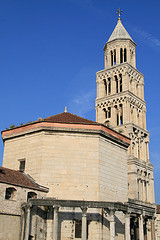

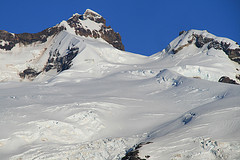


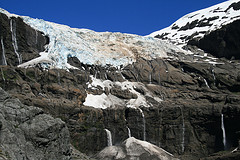
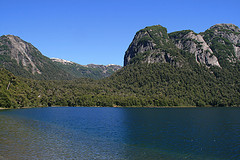 Cruce de Lagos: We managed, virtually by complete accident, to stumble across one of the main tourist attractions of the Lakes District: a bus and boat tour that ferries tourists (mostly Brazilians) from Puerto Montt in Chile to Bariloche. After two days of seeing hardly any people (on the second and third nights there were only three other tents at the campsites), we reached the end of the trail at Lago Frías to find a boatload of tourists awaiting their next cruise. We bought tickets for the two boats and two buses remaining (which cost, between us, a very steep 380 pesos – US$100 – and amazingly all the money we had on us totalled 380.75 pesos, just enough to scrape by) and joined the tour – the only way to get back to Bariloche other than to walk all the way back to the start of the trail and take a bus. Both the boat rides on Lago Frías and Lago Nahuel Huapi were quite beautiful and despite the culture shock of emerging from a peaceful trail to suddenly find ourselves in the thick of high-end tourism, it was a lovely way to end the trek.
Cruce de Lagos: We managed, virtually by complete accident, to stumble across one of the main tourist attractions of the Lakes District: a bus and boat tour that ferries tourists (mostly Brazilians) from Puerto Montt in Chile to Bariloche. After two days of seeing hardly any people (on the second and third nights there were only three other tents at the campsites), we reached the end of the trail at Lago Frías to find a boatload of tourists awaiting their next cruise. We bought tickets for the two boats and two buses remaining (which cost, between us, a very steep 380 pesos – US$100 – and amazingly all the money we had on us totalled 380.75 pesos, just enough to scrape by) and joined the tour – the only way to get back to Bariloche other than to walk all the way back to the start of the trail and take a bus. Both the boat rides on Lago Frías and Lago Nahuel Huapi were quite beautiful and despite the culture shock of emerging from a peaceful trail to suddenly find ourselves in the thick of high-end tourism, it was a lovely way to end the trek.
